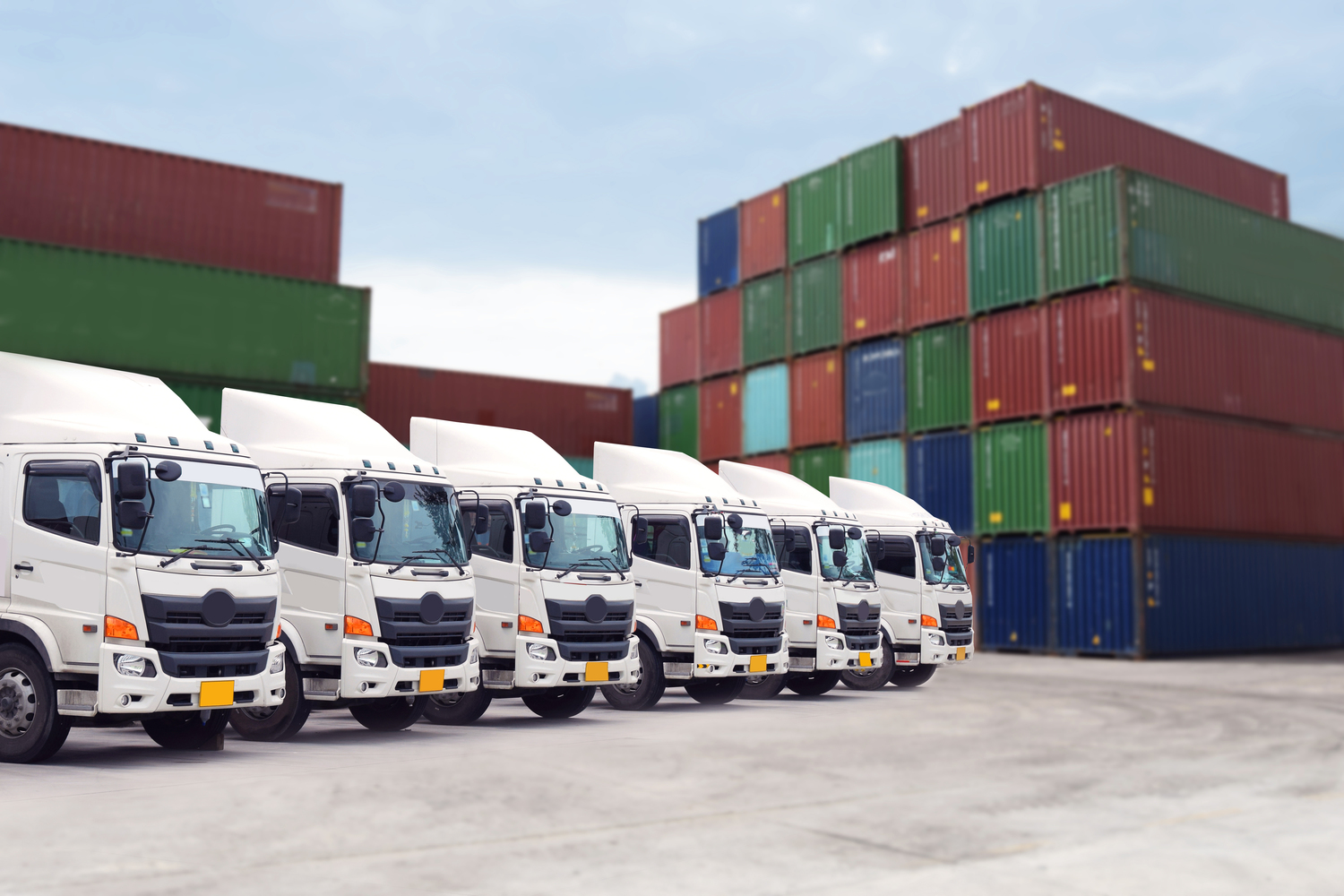Comprehensive Guide to Choosing the Optimal 3PL Partner for Your Business Growth
This comprehensive guide explores the strategic advantages of partnering with a 3PL provider, including cost savings, operational efficiency, and access to advanced logistics technology. It offers practical tips on evaluating potential partners based on infrastructure, reputation, and services, helping businesses choose a reliable and scalable logistics partner that drives growth and enhances customer satisfaction in a competitive e-commerce environment.

Comprehensive Guide to Choosing the Optimal 3PL Partner for Your Business Growth
In today's fast-paced e-commerce landscape, effective logistics management is crucial for business success. Many companies, ranging from startups to established retailers, seek to streamline their supply chain processes by partnering with third-party logistics (3PL) providers. These specialized logistics companies handle a broad spectrum of services including warehousing, order fulfillment, inventory management, shipping, and returns processing. Outsourcing logistics tasks to a capable 3PL enables brands to enhance operational efficiency, reduce costs, and deliver better customer experiences. This guide explores the essential benefits of collaborating with a 3PL provider and offers valuable tips to select the most suitable partner for your business needs.
Understanding the Advantages of Partnering with a 3PL
Choosing a third-party logistics provider is a strategic move that can significantly impact your company's competitiveness and scalability. Investing in an in-house logistics system involves considerable capital expenditure and resource commitment. Conversely, a well-chosen 3PL offers flexible, scalable, and cost-effective solutions that evolve with your business. Key benefits include cost savings, operational focus, technological access, and enhanced delivery networks.
1. Significant Cost Reduction and Financial Flexibility
One of the most compelling reasons to partner with a 3PL is the ability to minimize capital expenditure. Traditional retail brands often face large upfront investments in warehouses, equipment, transportation management systems, and logistics personnel. For online sellers and growing businesses, such investments can be financially burdensome and risky, especially during uncertain market conditions.
A 3PL provider absorbs these infrastructure costs, offering a pay-as-you-go model based on order volume and service needs. This means no hefty leasing expenses, no need to hire extensive staff, and no investment in logistics technology upfront. Instead, your company can allocate resources to core activities like product development, marketing, and customer service, thereby driving growth while keeping operational costs predictable and manageable.
2. Concentrate on Core Business Activities
Managing a warehouse and fulfillment center involves a multitude of complex tasks—staff management, inventory control, safety compliance, technology upgrades, and maintenance. These responsibilities divert focus from your primary business goals, such as innovating products, expanding your customer base, and refining marketing strategies.
Outsourcing logistics to a trusted 3PL frees up your time and resources, allowing you to direct attention on strategic initiatives. Especially for startups and small to medium-sized enterprises (SMEs) in growth phases, this shift can dramatically improve operational efficiency, accelerate time-to-market, and enable rapid adaptation to changing market demands.
3. Convert Fixed Expenses into Variable Costs
In-house logistics systems tend to incur fixed costs: warehouse rent, salaried employees, equipment depreciation, and routine maintenance. During off-peak seasons or fluctuating sales periods, these fixed costs remain constant, which can strain financial planning and cash flow.
Employing a 3PL service transforms these fixed costs into variable expenses, billed according to actual order volume and service levels. This flexibility is particularly advantageous during seasonal spikes, promotional campaigns, or market uncertainties, providing your business with the agility to scale operations up or down efficiently without overextending budgets.
4. Extensive and Reliable Delivery Networks
Successful e-commerce relies on prompt and dependable delivery. Leading 3PL providers operate extensive warehouse networks, strategically positioned across regions and even internationally. These networks enable rapid order fulfillment, often delivering within one or two days, depending on location.
By leveraging these sophisticated distribution channels, companies can dramatically improve shipping speed and reliability, reaching customers globally while maintaining competitive delivery standards. Quick, dependable delivery enhances customer satisfaction, fosters brand loyalty, and generates positive reviews that drive repeat business.
5. Access to Advanced Logistics Technologies
In today’s market, logistics technology plays a pivotal role in optimizing operations. Technologies such as robotic automation, RFID inventory tracking, real-time order management software, and route optimization tools elevate efficiency and accuracy. However, adopting and maintaining these technologies in-house can be prohibitively expensive, especially for small and medium-sized enterprises.
Partnering with a 3PL grants immediate access to these cutting-edge systems without the need for significant capital investment. This integration improves order accuracy, reduces processing times, and provides real-time visibility into supply chain operations—ultimately leading to enhanced customer satisfaction and operational excellence.
6. Cost Savings via Shipping Optimization and Negotiation
3PL providers often negotiate bulk shipping discounts with carriers due to the high volume of shipments they handle across multiple clients. These negotiated rates translate into reduced shipping costs for their customers. Moreover, 3PLs employ optimized routing and consolidated deliveries, further lowering transportation expenses.
Cost-efficient shipping not only benefits your profit margins but also allows you to pass savings onto customers through competitive pricing and faster delivery options, fostering loyalty and increasing market share.
Key Tips for Selecting the Ideal 3PL Partner
Assess Infrastructure and Capacity
Begin by evaluating potential providers based on their infrastructure—number and location of warehouses, fulfillment centers, and distribution hubs. The proximity of these facilities to your key markets influences shipping speeds, inventory management, and overall logistics costs. Ensure their capacity aligns with your current and projected order volumes.
Next, examine their technological capabilities, including integration options with your existing e-commerce platforms, order tracking systems, and inventory management software. Seamless integration minimizes disruptions and enhances overall efficiency.
Evaluate Experience and Reputation
Choose a reputable 3PL with proven experience within your industry segment. Look for client testimonials, case studies, and industry awards. Reliable providers like DHL, FedEx Fulfillment, Shipwire, and C.H. Robinson have established track records of dependable service, timely delivery, and effective return handling.
Investigate their customer service standards, responsiveness, and flexibility in accommodating unique business needs. A transparent 3PL partner will openly communicate, provide detailed reporting, and proactively address potential issues.
Examine Service Offerings and Customization
Different 3PL providers may offer varying levels of service—some may specialize in temperature-sensitive products, hazardous materials, or fragile items. Clarify the scope of their services, including value-added options like packaging customization, kitting, and reverse logistics.
Customized solutions ensure your specific requirements are met, enhancing customer satisfaction and operational efficiency.
Cost and Contract Terms
While cost is a significant factor, it shouldn’t be the sole consideration. Review the terms of service, contract flexibility, penalty clauses, and scalability options. Negotiating transparent, fair terms ensures your partnership can grow alongside your business.
Request detailed quotations with clear explanations of fee structures, including setup fees, storage charges, pick-and-pack costs, and transportation expenses.
Final Thoughts
Partnering with the right 3PL can be a game-changer for your business. It enhances scalability, reduces logistical complexities, and lets you focus on core growth strategies. By carefully evaluating potential providers based on infrastructure, reputation, technological capabilities, and service flexibility, you can establish a partnership that drives operational excellence and customer satisfaction. Remember, the right 3PL isn’t just a logistics service provider—it’s a strategic partner that can propel your brand forward in a competitive marketplace.





